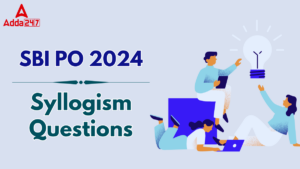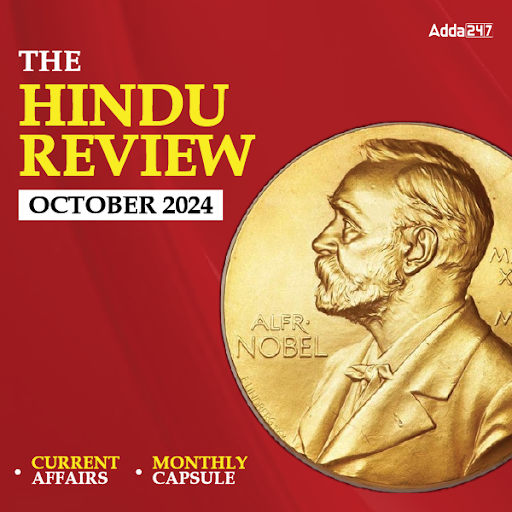
Directions (1-5): Read the following information carefully and answer the questions that follow:
Seven family members A, B, C, D, E, F and G are sitting around a circular table facing either the centre or opposite the centre, but not necessarily in the same order. Each of them likes different colour viz. Red, White, Black, Yellow, Violet, Green and Pink but not necessarily in the same order. There are two married couple in the family. And number of females are more than males in the family. C is the brother of E’s only sister G. D is father of E. C is married to A. B is son of C. F is mother in law of A. C sits third to the right of E’s sister. G faces the centre. Only one person sits between C and the person who likes Yellow. Immediate neighbours of C face outside. Only one person sits between F and D. Both F and D face the centre. Husband of F does not like Yellow. Wife of C likes Green. A faces the centre. Two people sit between the persons, who like Green and White. The person, who likes Violet sits to the immediate left of E. E faces same direction as her brother. The person, who likes Black sits to the immediate left of the person, who likes Pink.
Q1. The son of A likes which colour?
(a) Red
(b) White
(c) Yellow
(d) Violet
(e) Pink
Q2. What is position of B with respect to the person, who likes White?
(a) Immediate right
(b) Third to the left
(c) Second to the right
(d) Second to the left
(e) Fourth to the right
Q3. Who sits to the immediate right of sister of G?
(a) The person who likes White.
(b) C
(c) B
(d) The person who likes Yellow.
(e) A
Q4. Who amongst the following sits exactly between brother of G and the person who likes yellow?
(a) B
(b) The person who likes White.
(c) The person who likes Pink .
(d) D
(e) G
Q5. Who amongst the following sit between the persons, who likes White and Green, when counted for the left hand side of the person who likes White?
(a) F and G
(b) E and C
(c) C and B
(d) F and D
(e) B and D
Directions (6-10): In each of these questions the symbols @, #, $, % and * are used with different meanings as follows.
I. ‘P @ Q’ means ‘P is not smaller than Q’.
II. ‘P # Q’ means ‘P is not greater than Q’.
III. ‘P $ Q’ means ‘P is neither smaller than nor greater than Q’.
IV. ‘P % Q’ means ‘P is neither smaller than nor equal to Q’.
V. ‘P * Q’ means ‘P is neither greater than nor equal to Q’.
In each question, four statements showing relationships have been given, which are followed by four conclusions I, II, III and IV. Assuming that the given statements are true, find out which conclusion(s) is/are definitely true.
Q6. Statements: M # N, N * O, O @ P, P $ Q
Conclusions:
I. Q * O
II. Q # O
III. M * O
IV. Q $ M
(a) I and III are true
(b) II and III are true
(c) III and IV are true
(d) I and II are true
(e) None of the above
Q7. Statements: A $ B, B @ C, C % D, E * D
Conclusions:
I. A @ C
II. E * B
III. B % D
IV. A % D
(a) None is true
(b) I and II are true
(c) II and III are true
(d) I, II and III are true
(e) All are true
Q8. Statements: A @ B, B * C, C # D, D % E
Conclusions:
I. B % E
II. A @ D
III. B # E
IV. A * D
(a) Either I or III is true
(b) Either II or IV is true
(c) II and III are true
(d) Either I or III and either II or IV are true
(e) None IS true
Q9. Statements: A % B, B # C, C @ D, D $ E
Conclusions:
I. C % E
II. A @ C
III. A * C
IV. B $ D
(a) Either II or III is true
(b) Only I is true
(c) Only IV is true
(d) I and II are true
(e) None of the above
Q10. Statements: T % U, U @ V, V * Z, Z # X
Conclusions:
I. T @ V
II. T % V
III. X @ V
IV. X % V
(a) I and III are true
(b) II and III are true
(c) II and IV are true
(d) All are true
(e) None of these
Directions (11-12): Study the following information carefully and answer the questions given below:
(i) ‘P × Q’ means ‘P is the sister of Q’.
(ii) ‘P + Q’ means ‘P is the mother of Q’.
(iii) ‘P – Q’ means ‘P is the father of Q’.
(iv) ‘P ÷ Q’ means ‘P is the brother of Q’.
Q11. Which of the following represents ‘A is the grandfather of C’?
(a) A + B – C
(b) A ÷ B – C
(c) A × B + C
(d) A ÷ B + C
(e) None of these
Q12. Which of the following represents ‘P is nephew of Q?
(a) P ÷ S – Q
(b) Q ÷ S – P
(c) Q × S + P × L
(d) Q ÷ S – P ÷ L
(e) None of these
Q13. A is the brother of B, C is the brother of A. G is the mother of A. H and C are married. How is H related to B ?
(a) Brother
(b) Sister
(c) Sister in law
(d) Brother in law
(e) None of these
Q14. A is brother of C. E is brother of C. S is father of E. R is wife of S. How is C related to R?
(a) Son
(b) Daughter
(c) Father
(d) Either son or daughter
(e) None of these
Q15. Q’s mother is the sister of R and daughter of S. N is the daughter of R and sister of M. How is M related to S?
(a) Son
(b) Son’s Son
(c) Brother
(d) Daughter’s son
(e) Data inadequate


 The Hindu Review October 2022: Download ...
The Hindu Review October 2022: Download ...
 Syllogism Questions for SBI PO Exam
Syllogism Questions for SBI PO Exam
 What is Section A and Section B in IBPS ...
What is Section A and Section B in IBPS ...




